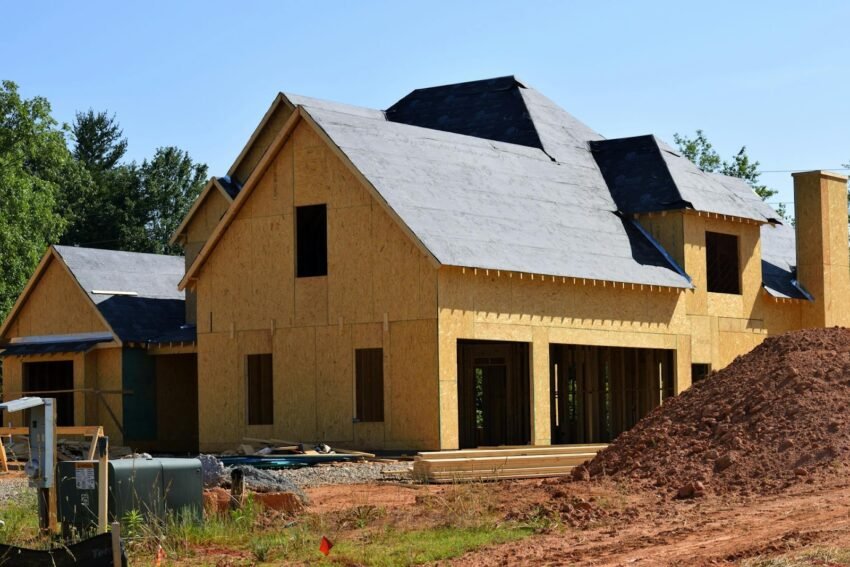The decision to build rather than buy often begins with a visit to display homes. Couples and families wander through torquay display homes and similar showcases across the country and world every weekend, running their hands along countertops and envisioning their lives unfolding in these spaces.
Yet, the gap between these polished showpieces and the reality of custom home building contains numerous misconceptions that can blind side first-timers. Understanding the realities behind these myths leads to smoother building experiences and homes that truly reflect their owners. Let’s take a look at six of the most common ones.
Myth 1: Custom Homes Always Cost Substantially More
The belief that custom automatically means budget-busting keeps many prospective homeowners from exploring this option. Reality proves more nuanced. Custom homes often cost more per square meter than production builds, but the comparison isn’t straightforward.
Volume builders achieve economies of scale by constructing variations of the same design repeatedly, using bulk-purchased materials. Custom builders create one-off designs, which does increase certain costs. However, custom-building allows precise allocation of your budget toward elements you value while economizing on less important features.
A savvy custom approach focuses spending on structural elements and features difficult to change later (ceiling heights, window placements, room proportions) while selecting mid-range fixtures easily upgraded in future years. This strategic allocation often delivers better long-term value than production homes loaded with soon-outdated bells and whistles.
Myth 2: The Design Process Takes Forever
Many assume custom design requires months of meetings and endless revisions. While some architects and designers do operate this way, experienced custom builders typically streamline the process through structured design development.
Most custom homes evolve through three to four design iterations over 6–12 weeks. Starting with a comprehensive client questionnaire and preference gathering, then progressing through conceptual design, refinement, and final documentation creates an efficient pathway to breaking ground.
The key factor? Clear communication about lifestyle needs, aesthetic preferences, and budget priorities from the outset. Clients who struggle to articulate these elements or change direction frequently do experience prolonged design phases, but this represents the exception rather than the rule.
Myth 3: You Need Architectural Training to Make Design Decisions
First-time custom builders often worry about making “wrong” design choices, assuming the process requires specialized knowledge. This simply isn’t true. Good builders and designers translate your lifestyle patterns into spatial solutions without expecting you to understand technical aspects.
The most successful custom homes result from clients who clearly communicate how they live, rather than architectural specifications. Your ability to describe morning routines, entertainment habits, storage needs, and privacy preferences proves far more valuable than knowing proper window head heights or optimal kitchen work triangles.
Professional builders bridge the gap between your lifestyle descriptions and technical requirements. Trust this translation process rather than feeling pressured to develop sudden architectural expertise.
Myth 4: Changes During Construction Are Prohibitively Expensive
The horror stories about mid-construction changes bankrupting homeowners contain kernels of truth but overlook important nuances. While significant structural changes after framing certainly cause budget and timeline explosions, many modifications remain quite manageable when properly communicated.
The cost impact of changes follows a predictable escalation pattern: changes during design cost almost nothing, changes before construction begin carry minor administrative fees, changes before affected work begins involve moderate costs, and changes requiring demolition or rework become genuinely expensive.
Establish a decision schedule with your builder that identifies critical deadlines for selections and potential change points. This framework allows thoughtful modifications without derailing budgets or timelines.
Myth 5: You’ll Have Total Freedom in Design Choices
Despite what home renovation shows suggest, custom-building never offers unlimited options. Every project operates within constraints of budget, site conditions, building codes, and material availability. Even the most accommodating builders must occasionally say “no” to certain requests.
The true advantage of custom-building lies not in unlimited choices but in prioritized choices. Rather than accepting a production builder’s predetermined option packages, custom clients direct resources toward personally important elements while making economic choices elsewhere.
Effective custom-building means embracing these constraints as creative challenges rather than limitations. The most distinctive homes often emerge from clever solutions to site challenges or budget constraints.
Myth 6: Once Completed, Everything Will Be Perfect
Perhaps the most dangerous myth suggests that custom-building eliminates the normal adjustment period of homeownership. Even meticulously planned custom homes require settling-in time as materials acclimate, minor issues emerge, and homeowners adapt to new spaces.
Expect a 3-6 month period after moving in during which small issues will need addressing. Reputable builders stand behind their work with comprehensive warranties, addressing these matters as part of the normal building process rather than as defects or failures.
The most satisfied custom homeowners maintain realistic expectations about this adjustment period, understanding the difference between normal settling and legitimate construction issues.
Custom-building delivers homes that reflect specific needs and preferences in ways production building simply cannot. Understanding these realities from the outset transforms the building journey from potentially stressful to genuinely rewarding.

